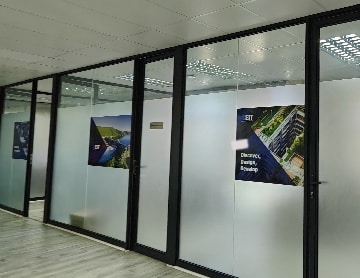Dear Colleagues
Perhaps like you, I tend to get somewhat peevish when confronted with yet another ghastly software package or computer interface which is unusable without considerable (indeed mind altering) training. And yet, surely usability is one of our most vital missions or requirements when designing and building a product (or indeed in delivering a service).
I always suggest in our software projects, much to amusement of our programmers, that you should design the (often, software) interface so that even an orang-utan can sensibly use it. As engineering professionals, in our pursuit of efficiency and technical excellence we often lose sight of the key issue that eventually a human will be using our product. Whether it is a chef in a kitchen pressing the button on a mixer, an operator controlling a nuclear reactor or indeed you – trying to grasp how to record a TV program on your new video recorder.
Usability is defined as: ‘the degree to which something—software, hardware, or anything else—is easy to use and a good fit for the people who use it . . . It is whether a product is efficient, effective, and satisfying for those who use it.’ (from the Usability Professionals’ Association).
From a computer perspective (as you would expect !), Apple has the highest rating of usability of all computer users (in a recent survey rated at 80%, compared to the pack of computer vendors lurching around at 60%). Personally, Steve Jobs of Apple is ruthless in his pursuit of usability – for example, the i/Pod has a very simple “usable” interface (designed for use by an orang utan !).
As some of the old hands would remember, when we design engineers and technicians had designed the product, we sat around with a technical writer and put together a manual and documentation on how to use it. At the same time, we often did a test with a few clients on how they perceived the product and then made some changes to make it more user friendly and usable. As products became more complex, these instruction manuals became larger and more unwieldy. And often required training in how to read the manual and thence the product. The final stage was to place the gigantic product manual on an accompanying CD (supposedly to save paper but really to save the vendor money); which of course no one read. We have now reached the stage, where the software package often has the help facility built into it with no written instructions available (if you are desperate you can search the internet for some manual). Apparently the software will proffer you appropriate help when you need it. Yeah. Right.
Incidents of horrible usability
I can still remember incidents of products of horrible usability. A firm in Boston designed and sold us an expensive sequence events recorder for recording power system protection events which required intricate care in setting up (using a poorly written instruction manual with parts still handwritten). When we reverted back to the original design team for help (technical support had long since abandoned us), their unforgettable rejoinder to us was: ‘Have patience; together we can make a better product’. Or a supposedly comprehensive SCADA software product which came with a deluge of manuals (relating only to the operating system and nothing on the actual SCADA software). When pressed the SCADA vendor faxed the three page Operators and Programmers manual through to us. The firm has long since being consigned to the dustbin of Industrial Automation history. Or the control system for a gas turbine which again consisted of a ‘work in progress’ being intermittently transformed from a “home designed Boy’s Own electronics system” to a more professional PLC based system; which required incredible contortions from the operators to program and understand.
As we all know (from previous experience) many software vendors simply release their program to the unwary masses without comprehensive testing with the idea that they will let the market be the test bed. This is often due to the costs of development having overshot the budget and the time to completion has also long since been exceeded with the consequent urgent need to get the product to market as soon as possible.
The Science of Usability Components
As Jakob Nielsen remarks – usability has five main components:
• Learnability: How easy is it for users to accomplish basic tasks the first time they encounter the design?
• Efficiency: Once users have learned the design, how quickly can they perform tasks?
• Memorability: When users return to the design after a period of not using it, how easily can they re-establish proficiency?
• Errors: How many errors do users make, how severe are these errors, and how easily can they recover from the errors?
• Satisfaction: How pleasant is it to use the design?
How to improve the usability of our designs
• Probably the quickest way to improve usability is to get hold of some typical independent users (outside your department and indeed your company preferably)
• Get the users to perform typical tasks without any intervention from you
• Observe what the users do / where they succeed / and where they have difficulties. Don’t co-ach or help them; let them work on their own and let them explain the problems.
• Keep iterating the process by improving the usability and let new independent users again test it out
As Donald Norman remarks: Beauty and brains, plea-sure and usability — they should go hand in hand.
Thanks to the inimitable Donald Christiansen of the IEEE for a thought provoking article; and Jakob Nielsen on his web site: https://www.useit.com/ (focussing mainly on web usability).
Yours in engineering learning
Steve


